After Hurricane Maria, Puerto Rico’s forests performed incredible feats of recovery, using strategies fine-tuned by centuries of adaptation to hurricane cycles. Researchers and farmers are watching these systems to learn how people can follow suit.
He awoke to a devastated landscape. A huge palm tree lay across the entrance to the farm, and pools of water filled its valleys. The surrounding forest, stripped of every leaf, looked like a scattering of giant sticks jammed into the ground. There were pools of standing water from the intense rains. His land looked anything but ready for growing vegetables.
And yet one month after the storm, El Josco Bravo was once again producing crops.
Pagán rebounded quickly because he views his farm as an ecosystem, one that should be self-sufficient and resilient just like a natural Puerto Rican forest. It was no coincidence that his farm that imitated these qualities recovered quickly from Hurricane Maria.
Across the island, Puerto Rico’s forests outpaced many of the human systems in regrowth after the storm, and Pagán was not the only one watching. In places like El Yunque, the island’s 28,000 acre national forest, sun-loving plants quickly sprang up under the opened canopy, providing shade for other species and making way for the reformation of the forest structure. These natural systems, shaped by centuries of evolution and adaptation, know how to rebuild after the disaster, but scientists in El Yunque and beyond still hope to gain new insight on how the ecosystem works and what humans can take away from it to prepare for the next big storm.
For many observing the island’s recovery, Maria offered one big lesson: when disaster strikes, it is nature itself that holds the best lessons on resilience.
“A toothpick forest”
Forests are an integral part of Puerto Rico’s environment. They cover 60 percent of the island, shading urban and rural areas alike. Magnificent native palms, squat platano trees with elephantine leaves and orange-flowered, soft-barked African tulip trees populate the land with their vibrant green, tropical splendor.
In El Yunque National Forest, one of the oldest forest reserves in the Western hemisphere, the lush tree canopy stretches smoothly across the northeastern corner of the island. The thick foliage offers a shady respite to hikers wandering through the forest on a hot, sunny day.
That all changed after Maria. The 155-mile winds, rains and subsequent landslides damaged or killed an estimated 23-31 million trees across the island. The gusts ripped smaller plants up by the roots. The lush canopy and foliage disappeared overnight.
“It was a toothpick forest,” said Grizelle Gonzalez, a soil scientist at the International Institute of Tropical Forestry.
Wind Speeds vs. Plant Life
Previous studies in the Luquillo Mountains of El Yunque’s rainforest have given us data on what happens to plants at various wind speeds. These four tree species are commonly seen in El Yunque, and this is what Maria might have been like for them.

Gonzalez works in El Yunque and lives several kilometers north of the forest in the town of Luquillo. During the storm, she felt her house shake, and water came in horizontally through the metal shutters covering her windows. The sounds of growling, cracking and whistling surrounded her as Maria hit the Luquillo Mountains, one of Puerto Rico’s primary topographic barriers against storms.
This was not Gonzalez’s first hurricane. The 46-year-old, who wears bright pink lipstick with her muted tan and green U.S. Forest Service uniform, was also on the island for Hurricane Hugo in September 1989. But when she finally made it outside a day after landfall, the sight of the decimated forest still shocked her.
“It was like a bomb hit,” she said. “It was like the temperate forest right before winter is coming, and it’s like, but I'm here!”
For Gonzalez, the completeness and intensity of the destruction in the forest was almost overwhelming. But deep down she knew it would recover, as it was adapted to do. Over the next few months, the forest would prove her right.
A system tried and true
Right after Hurricane Maria, Ariel Lugo, the 74-year-old director of the International Institute of Tropical Forestry, went into the forest to take a picture. It was of a site, identifiable by data collection instruments, that he had been photographing since the day after Hurricane Hugo hit the island 28 years ago. He wanted to document the forest’s recovery timeline, and the post-Maria picture would be the last in the series, a way to bring the project full circle.
But he also went to check on one specific type of tree–the tabonuco.
Tabonuco trees grow on the ridges of the mountains where the wind blows strongest. They are one of the tallest species in the forest, but despite their height, tabonucos hold their ground during storms that rip away their leaves. This is because of their interconnected root systems, Lugo said. An entire stand can be united and deeply entrenched in the ground. Though fallen trees littered the forest, Lugo wanted to see if the tabonucos were still standing.
They were.
The tabonucos are one example of a species that has taken adaptive measures to withstand Puerto Rico’s hurricane cycle. With intact root systems, the tabonucos can quickly restart water and nutrient uptake, and begin regrowing leaves.
Another resilient tree species is the Cecropia schreberiana, a pioneer species and one of the first to occupy a disturbed area. The post-hurricane landscape of open sky and bare ground provides a perfect nursery for its hardy seedlings. Cecropia can rapidly grow to 50 feet, and the shade cast by its giant leaves provides the optimal conditions for slow-growing, shade-tolerant species to take root beneath it.
Six months after the hurricane, the growth of Cecropia and other sun-lovers like ferns, grasses and shrubs is in full swing, and they dominate the forest floor. Trees rising above the bushy undergrowth sport tufts of leaves at their crowns and around their stubby branches. Eventually the Cecropias will die and the understory will clear, allowing the other plants to close the canopy.
In 10-15 years, an average person–a non-scientist–walking into El Yunque will not be able to tell that anything happened there, Lugo said. In 25 years, dead trees will be decomposed and recycled. The canopy will have fewer pioneer species and more slow-growers settled in. In 100 years, only scientific research and acute observation will be able to reveal the marks of the hurricane left after the forest’s incredible recovery system.
“Nature has natural selection,” Lugo said. “If something doesn't work, it gets eliminated and you get an alternate.”

“Nature has natural selection,” Lugo said. “If something doesn't work, it gets eliminated and you get an alternate.”
Ariel Lugo, director of the International Institute of Tropical Forestry
While scientists like Lugo and Gonzales have been studying forests and hurricanes for decades, Maria’s strength and impact gives them new insights to the recovery process. It may also offer insight into predicting what may happen in future storms.
“If you can predict what's going to happen fairly confidently, then you can take steps to manage it or tolerate it,” said Nicholas Brokaw, an environmental science professor at the University of Puerto Rico-Rio Piedras. “That's our goal in science.”
Gonzalez said that now is an important time to get the Forest Service’s equipment ready to observe and document the changes happening in the forest.
“This is actually the first major hurricane that hit the whole island, and that we have the research infrastructure to really document,” she said.
This documentation will be especially important as scientists question whether another major storm will hit the island in the next 60 years, the average recurrence time of extreme hurricanes.
“If these [hurricanes] are to happen more frequently and more intensely, well, we need to do something about it,” Gonzalez said. “The hurricane has created a clean slate.”

“If these [hurricanes] are to happen more frequently and more intensely, well, we need to do something about it. The hurricane has created a clean slate.”
Grizelle Gonzalez, a soil scientist at the International Institute of Tropical Forestry.
Success at El Josco Bravo
Farmers are one group that is rebuilding from this clean slate. Pagán’s farm, which recovered more quickly than most after the hurricane, offers a model for regrowth based on nature’s resilience. The young farmer, clad in tall rubber boots and a straw hat during his busy days at El Josco Bravo, attributed his success to three strategies.
One was his preparation for the storm, including removing his greenhouse roof and digging trenches. The winds blew through the empty skeleton of the greenhouse, and the trenches around his fields gathered the water and prevented erosion of the soil Pagán has spent three years cultivating. Pagán said other farmers failed to take these preventative measures partly out of complacency–the relative mildness of Hurricane Irma gave them false confidence, he said. But Pagán had too much at stake to take any chances.
His second strategy was his permanent infrastructure, mainly his greenhouse and his lake. These structures meant he didn’t have to spend time rebuilding his nursery or water supply. But his third strategy was most important, and it was his agroecological philosophy.
As a part of this philosophy, Pagán doesn’t rely on machinery, because it requires non-renewable fuel inputs that, in Puerto Rico, come in as imports. After the hurricane, other farmers waited in 10-hour lines to get gas to fill their tractors, but Pagán’s tractors ran on grass, and occupied themselves during the storm munching on breadfruit from a fallen tree nearby. On Oct. 3, two weeks after Maria, Pagán harnessed up his oxen and started plowing his two acres of land.
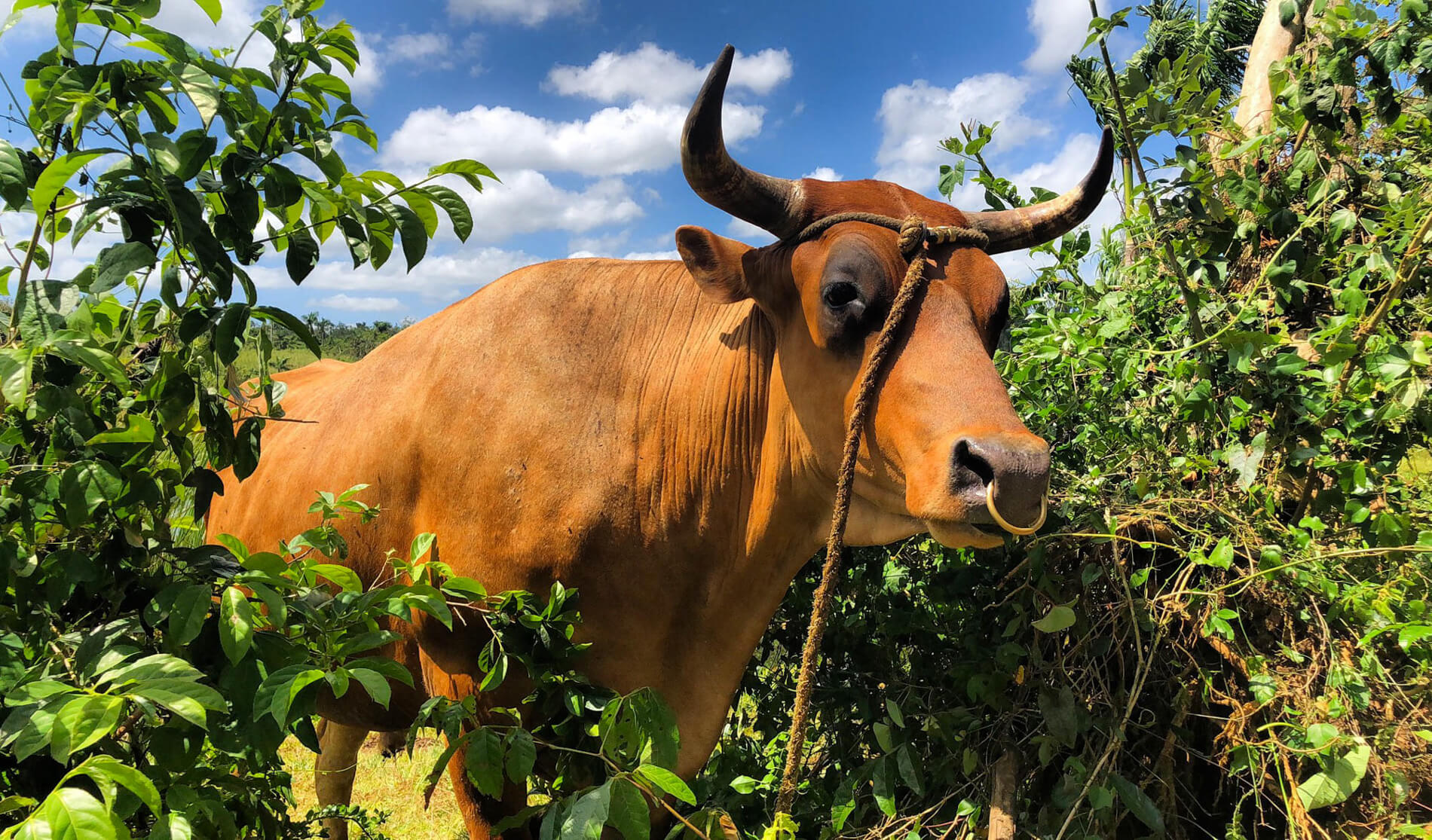
Photo: Alice Hudson
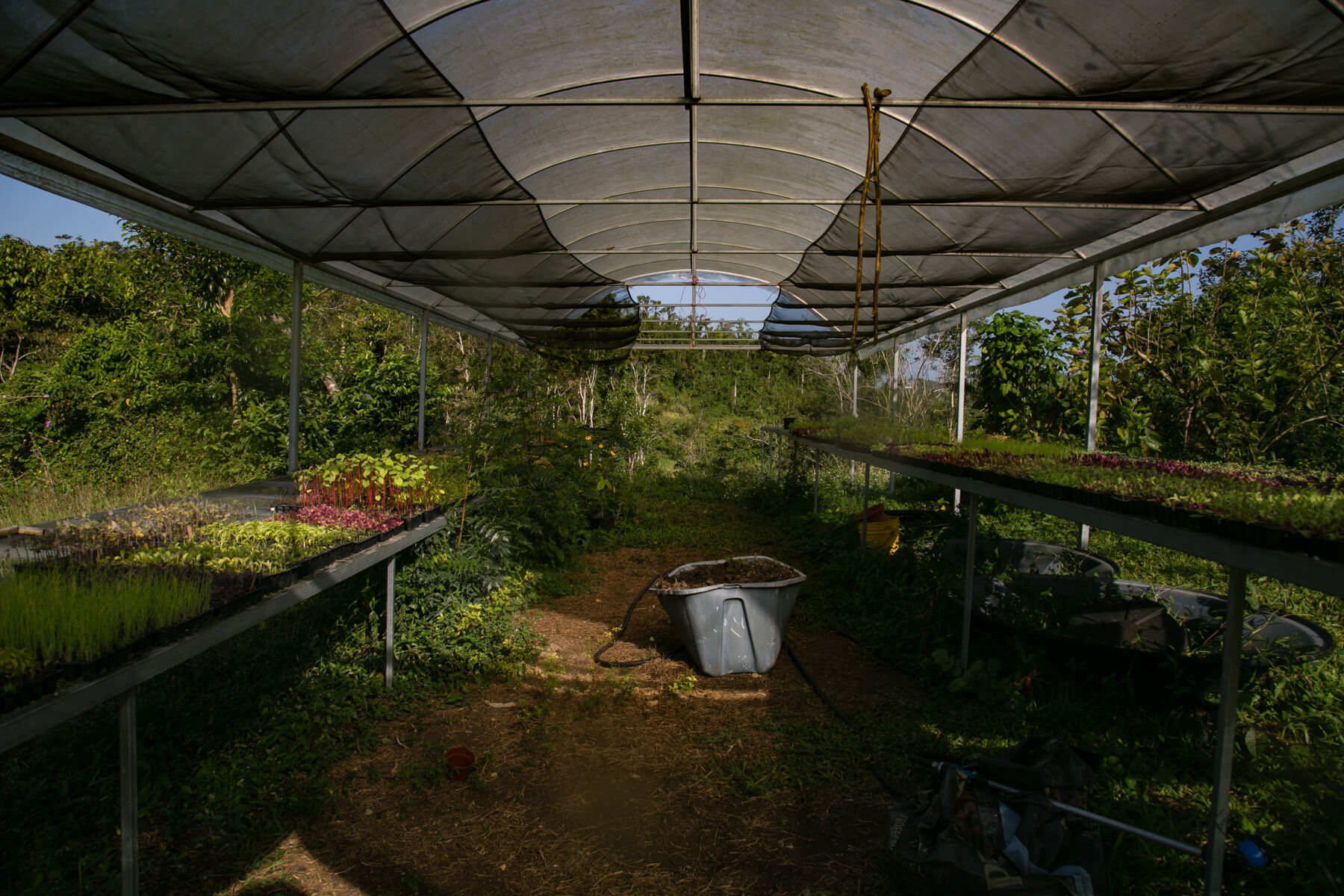
Photo: Kaitlin Harlow
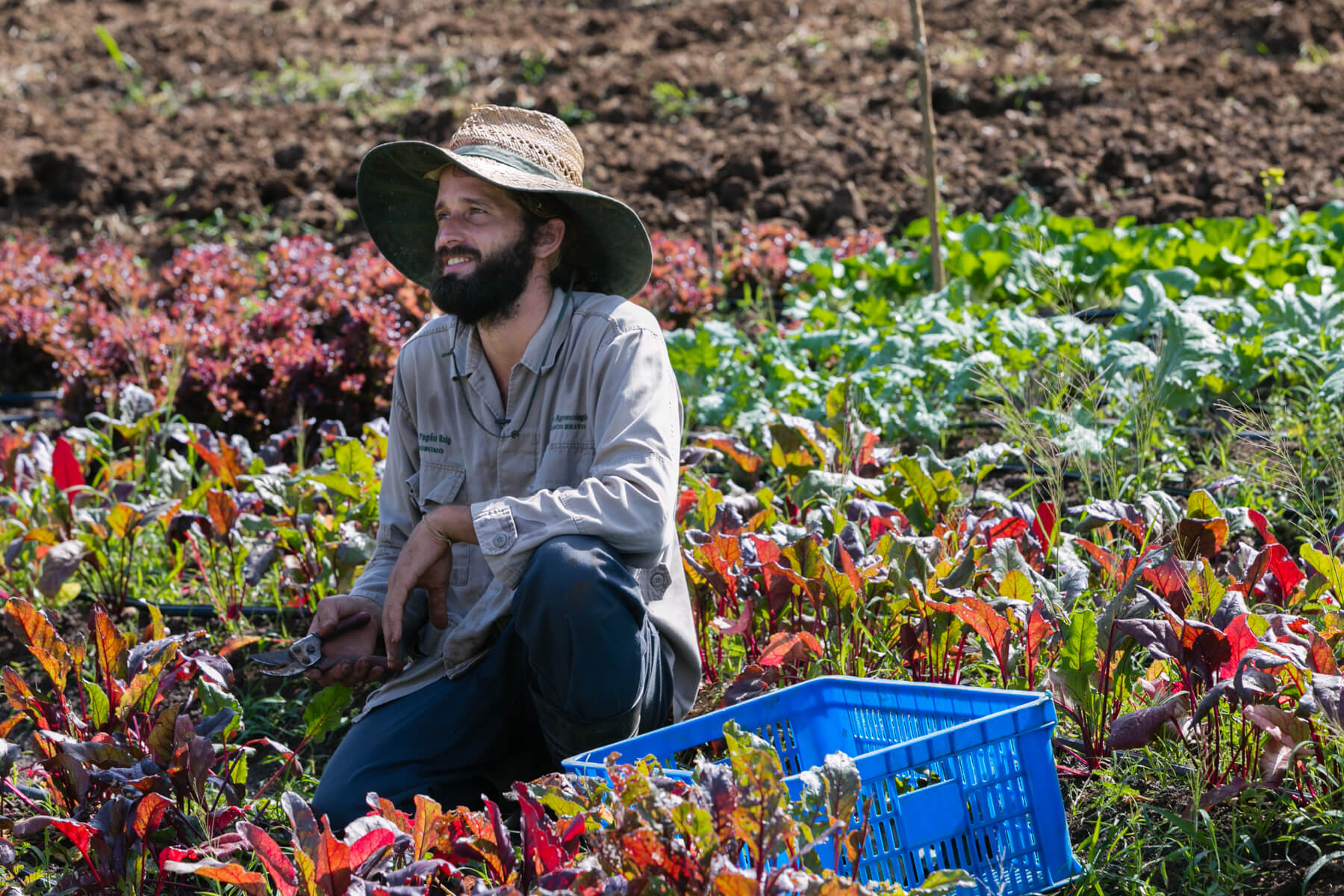
Photo: Kaitlin Harlow
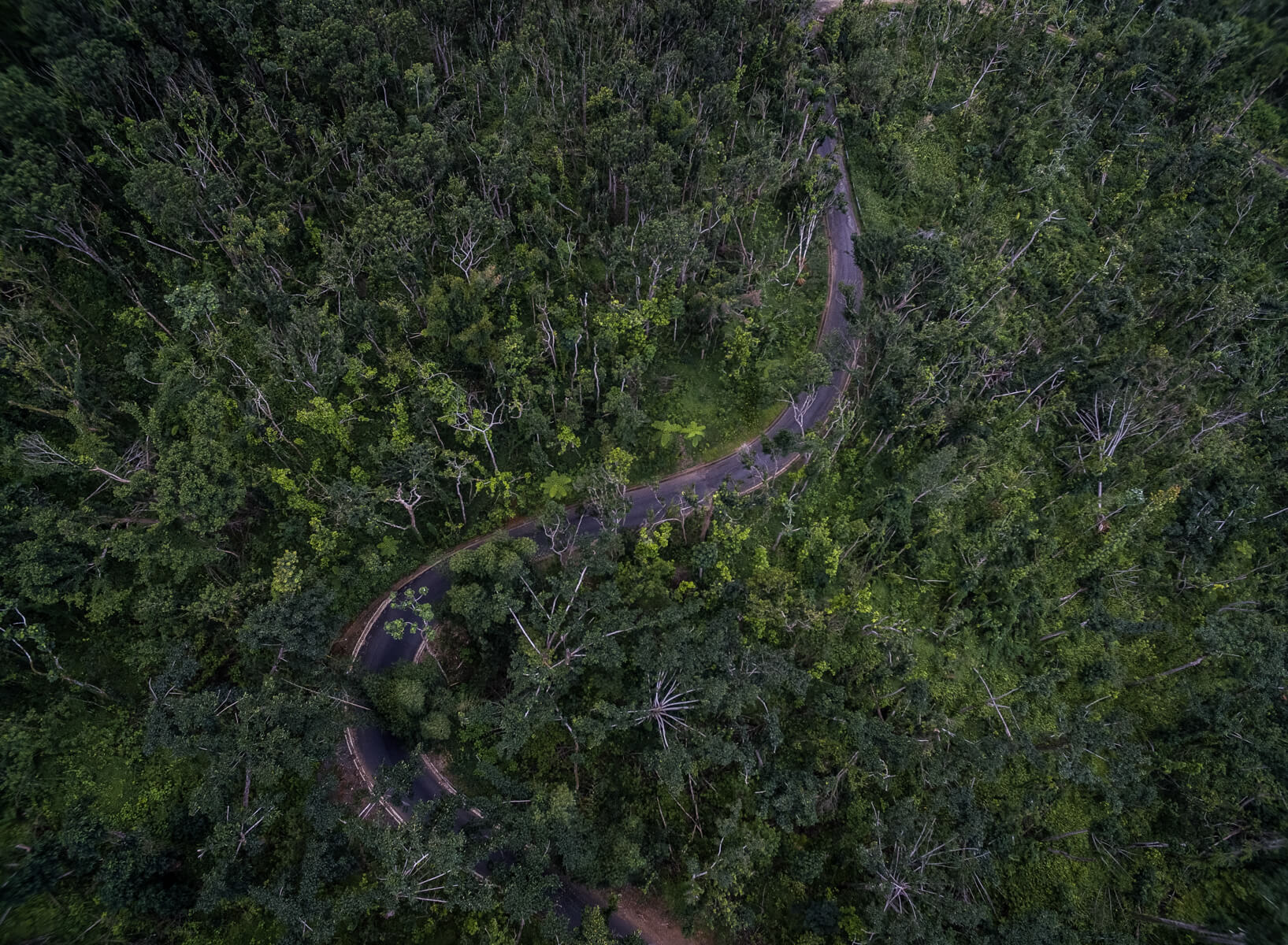
Photo: Alexis Fairbanks
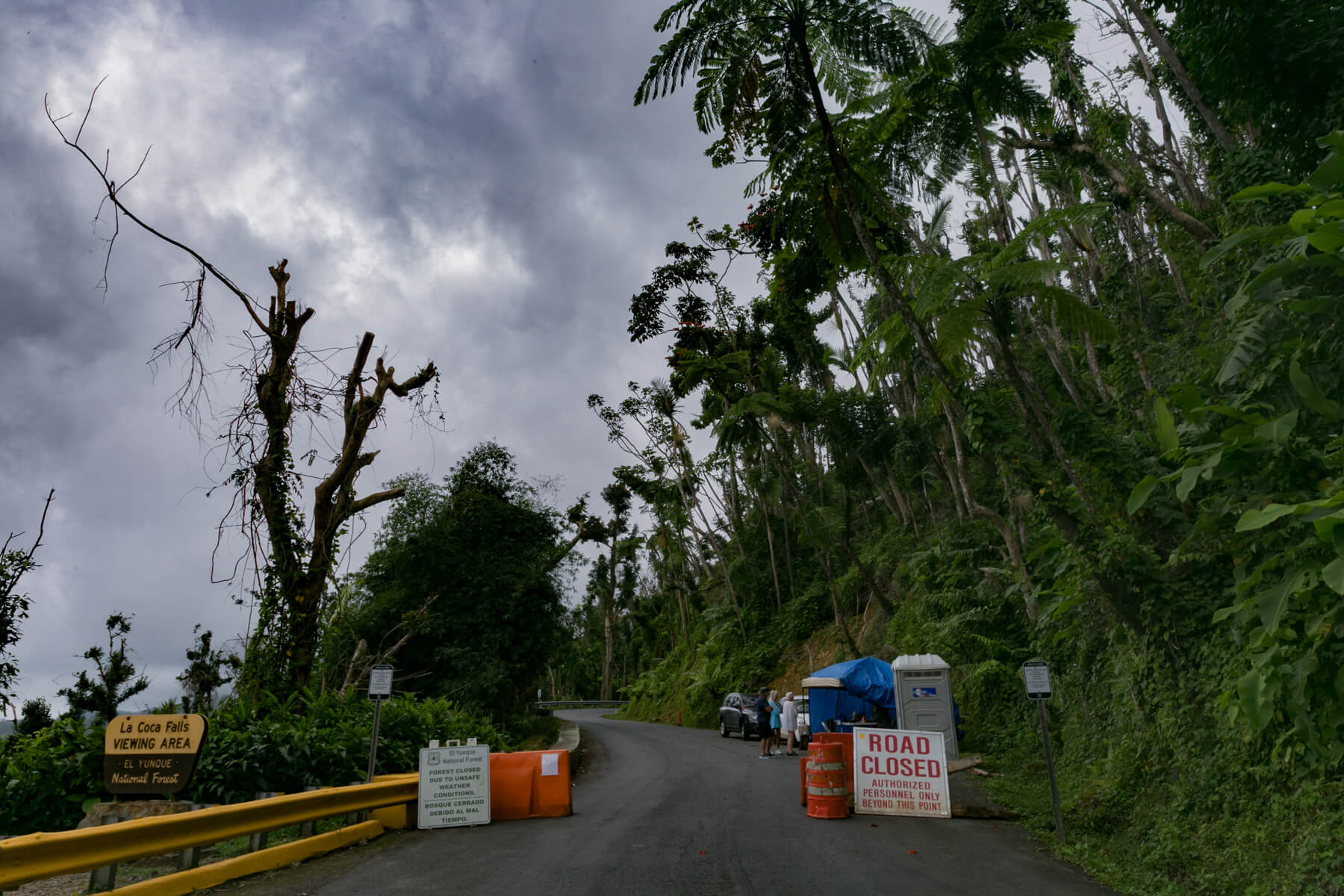
Photo: Kaitlin Harlow

Photo: Alexis Fairbanks

Photo: Kaitlin Harlow

Photo: Kaitlin Harlow
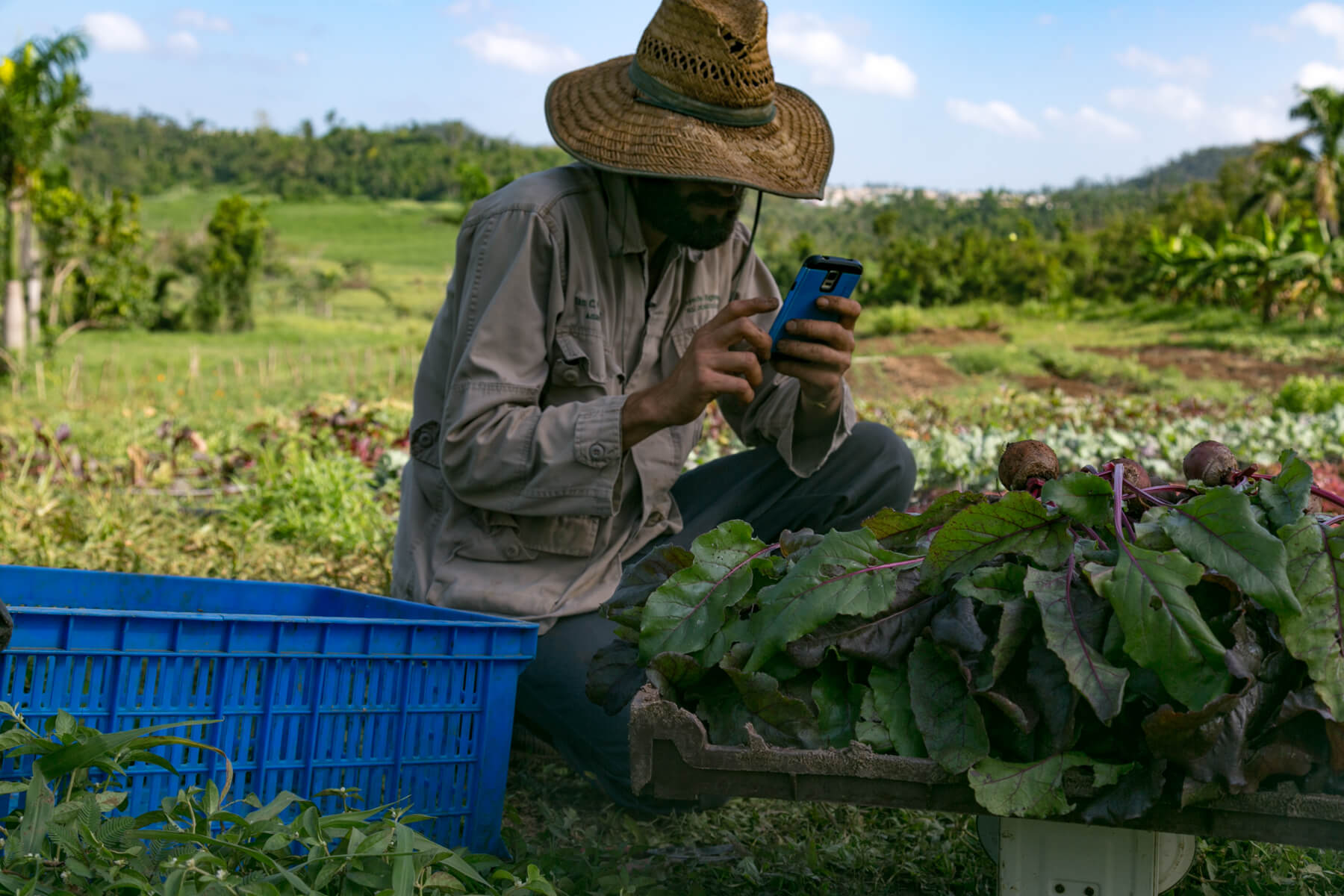
Photo: Kaitlin Harlow

Photo: Alice Hudson
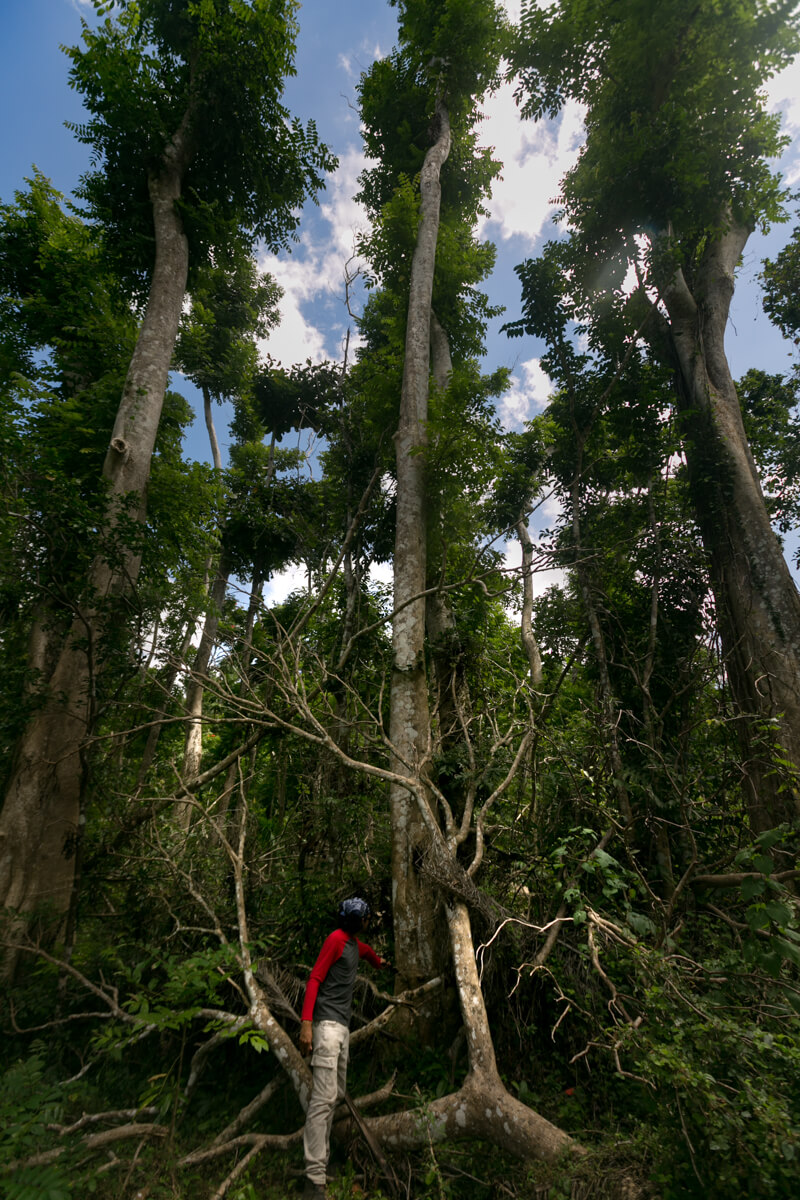
Photo: Kaitlin Harlow
Pagán also uses cover crops and makes compost from his neighbor’s yard waste to increase nutrients and water retention in his soil, which boost its fertility without the use of chemical fertilizers. Pagán, who did his master’s thesis at the University of Puerto Rico-Mayaguez on organic methods of soil recovery, could place his young crops in the rich brown earth as soon as they were big enough to come out of the greenhouse.
Pagán’s recovery paralleled that of El Yunque–both places built their regrowth on animals, sunlight, water and natural resources that didn’t need to come in from overseas. This is the result of agroecology, and Pagán saw his ability to produce food so quickly after the storm as evidence that his methods give farmers the tools to produce food even after great disturbances.
He hopes this self-sufficiency will also change the conventional agriculture systems that colonialism imposed on the island. Ever since the Spanish claimed Puerto Rico in 1493, most of the island’s agricultural land has been devoted to the demands of export markets, with coffee, sugar and tobacco plantations pushing out subsistence farmers and causing a decline in the amount of food produced on-island for Puerto Ricans. The island currently imports 80-85 percent of its food. In recent years, young farmers like Pagán have been trying to shift the island to more sustainable practices–installing rain barrels, saving seeds and cultivating compost, all measures that reduce the need for the outside inputs that became so scarce after the hurricane.
“The hurricane basically made us understand how important [agroecology] is,” Pagán said. “The hurricane suddenly changed our reality.”
Moving forward
When Rey Cruz Aguilar was growing up in Arecibo, a city on the northern edge of the island, his grandfather would visit every Sunday to work in their garden. At half an acre, the garden, more like a little farm, full of sweet potatoes and tomatoes, could feed the family.
Cruz Aguilar remembers his grandfather, who grew up working on sugarcane plantations, could stick a machete in the soil and know exactly where to find the hidden tubers.
Cruz Aguilar started helping in the garden at 13 and loved the feeling of harvesting his own food after three to five months of hard work and cultivation. He couldn’t stick a machete in the ground without splitting a potato, but he still wanted to become a farmer after he graduated high school.
He got his bachelor’s degree in agronomy from the University of Puerto Rico-Mayaguez, but found that his courses explained agriculture as a chemistry lesson, a series of methods for mixing water and chemicals in certain quantities to produce results. He wanted to gain a better understanding of ecosystems and the animals, bacteria and soil conditions unique to each place that could be used to help farmers.
The 23-year-old is now nearly finished with the first year of a master’s program in ecology at UPRM. With his mentor, Oscar Abelleira, Cruz Aguilar studies how African tulip tree forests, a prolific invasive from Africa originally introduced as an ornamental tree, can provide shelter and shade for the growth of a more desirable species: Pterocarpus officinalis, a native wetland tree. Pterocarpus once dominated the area and helped to control flooding but are now a rare sight in Puerto Rican forests.
The hurricane produced an interesting result on the Pterocarpus. During the storm, many African tulip trees fell down, resulting in the poky, scattered looking forest with open canopy. Suddenly exposed to more sunlight, the Pterocarpus exploded with growth. In the six months post-hurricane, one Pterocarpus planting grew at least a foot and thickened from a slender sapling to a sturdy little tree. It offered a possible conclusion of the study.
“Maybe one day, this tree will grow and dominate part of the canopy,” he said. “And more will come out, and more of this species can keep a presence.”
Many farmers in Puerto Rico own land currently overrun by the African tulip tree and its bright orange flowers, but the ability of the Pterocarpus to grow and thrive within the system means those terrains are not lost, Cruz Aguilar said. And it means that the research also holds methods for building more sustainable farms.
“One of my dreams is to have a farm,” Cruz Aguilar said. “Everything I have done or will do relates to that dream.”
If non-native forests can foster native species, they can also do so for fruit-bearing trees or wood trees, he thought. All three of these species would have hurricane protections for people, either through controlling flooding or providing food or building materials.
Conventional agriculturists like his grandfather currently ignore or do not understand this potential, Cruz Aguilar said. The older man, who still farms a plot of land at his home, would never consider planting crops among the “piss trees.” But this is not the mindset his grandson sees solving a food crisis like what Puerto Rico faced after Maria, which left people like Cruz Aguilar scavenging among fallen avocado and lemon trees as grocery shelves emptied.
New farmers are trying to break that traditional sense of agriculture, Cruz Aguilar said, by expanding and sharing knowledge about the new methods that combine environmental systems and farming practices.
“I’m studying ecology right now to better my agriculture,” he said. “I see them more integrated.”
The relationship between the two is what helped Pagán successfully survive Hurricane Maria, and it is what Gonzalez hopes Puerto Ricans see when they look at how the forest systems are continuously evolving.
“It's important that people understand that these systems are very resilient, very resilient and resistant,” she said. “Given the time to recover, the forest will respond positively.”


